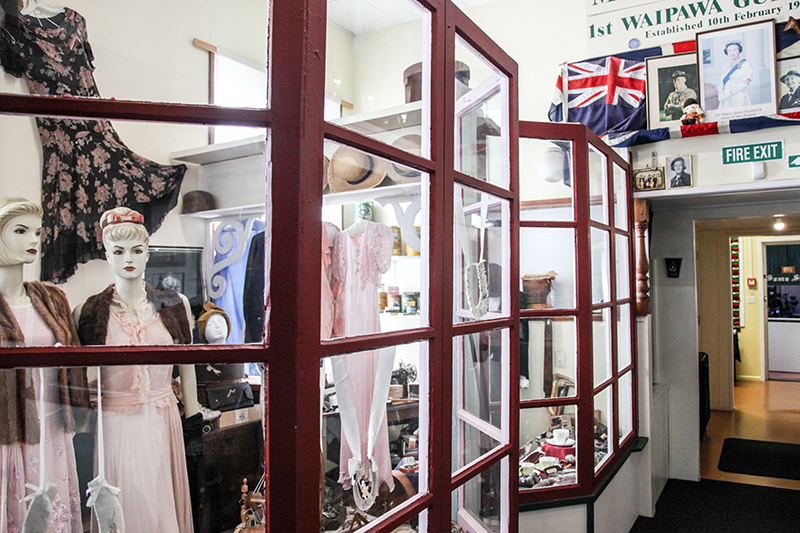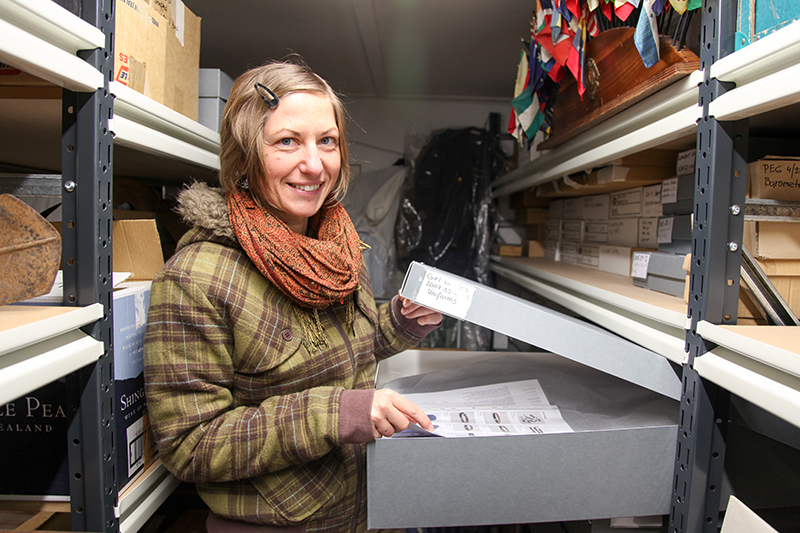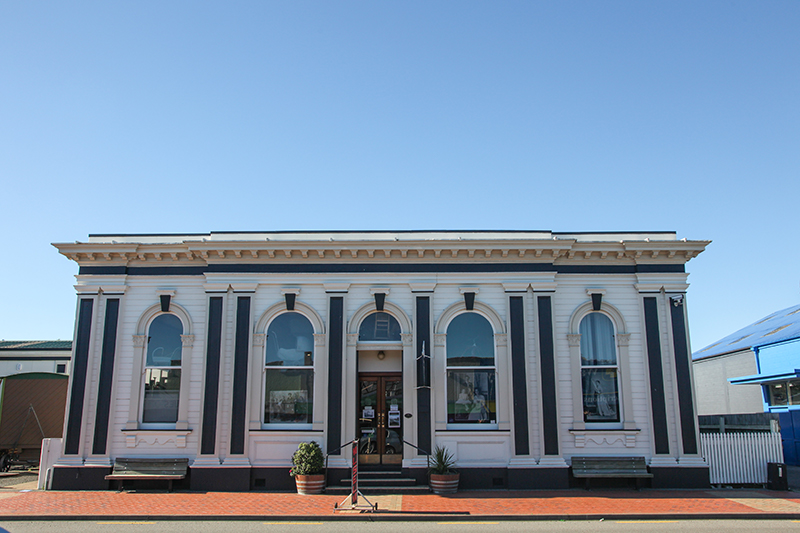“If you don’t know history, then you don’t know anything. You are a leaf that doesn’t know it is part of a tree.”—Michael Crichton, American novelist.
Luckily, someone had the foresight to gift the Bank of New Zealand building in Waipawa for use as a settlers museum.
Not only is it of interest to the people of Central Hawke’s Bay but it’s also a magnet for history-loving travellers to these parts.
And although Waipawa—a population of 2060 and one of New Zealand’s earliest inland towns— isn’t a huge tourist destination, it’s beginning to develop a heritage village feel that makes you want to jump out of the car and take a closer look. There’s a retro cafe called Nola, or maybe you fancy scouting for a bargain in one of the several second-hand shops, or want to browse one of the other niche market businesses there.
CHB Settlers Museum
On the opposite side of the street, the colonial wooden building the CHB Settlers Museum is housed in stands proudly alone, having once been surrounded by buildings from the same era; some were demolished and one—a hotel—burnt down in 1961.
Museum curator and manager, Jana Uhlirova, says the museum receives around 6000 visitors a year but she thinks it deserves wider attention. In spite of hailing from the other side of the world, she is passionate about local history. Born in the Czech Republic, Jana gained her masters degree in the History of Art and Museology (museum study) before travelling to New Zealand as a backpacker. Here she met her partner, who is from Waipawa, and then happened to discover the CHB Settlers Museum was in need of a curator. It was a perfect fit.
“My goal always was to work in a museum and it was ironic to find one so far away from home. I just love it. Sometimes it’s hard to leave work each day and go home. Some say ‘what’s interesting about this town’s history. Isn’t it rather boring?’ But I don’t find it so. A small piece of local history is equally important because it makes up the larger story of New Zealand’s history.”
Exhibiting history
One of the things Jana has done to attract visitors is to stage regular exhibitions and so far it’s worked well.
The latest exhibition celebrates the 150th anniversary of Waipukurau. Waipawa had its 150th birthday a few years ago. It’s a bit like Waipukurau’s older sister and although Waipawa was originally planned to be the larger town, it hasn’t developed that way with Waipukurau’s population being 4080.
There are some fascinating tidbits of information, including two royal visits.
In 1920, the Prince of Wales—then the future King of England—visited Waipukurau and ‘attracted the biggest gathering ever seen in the town’. In 1954, Queen Elizabeth and Prince Philip arrived by train ‘to prolonged bursts of cheering and were met by the local mayor and mayoress’. That wouldn’t happen today, would it?
War history is also a big part of the museum and men and women who took part in WWI and WWII from the district are remembered in several displays.
Jan Gosling's hand-painted mural
Waipawa artist and sculptor, Jan Gosling’s hand-painted mural dominates the foyer. It’s an accurate depiction of the buildings that existed here at the turn of the 19th century. She has a keen interest in the history of the area with her ancestors being early settlers in the district.
The museum is divided into rooms with different themes in each one, so visitors gain an idea of what life was like back then. There’s a typical 19th-century dining room lined with heavy drapes and a table laid with fine tableware; in another, there’s a children’s nursery with a collection of toys.
Jana says a man donated a favourite family toy called Pinky. It was made by his grandmother from a flour bag during the threadbare war years. “It’s so cool to know the story behind it and how cherished this simple toy was.”
She enjoys seeing the reactions from schoolchildren when they come in and discover things they never knew existed, such as vintage telephones, typewriters, household items, and machinery.
“The children are among our most valuable visitors because they are so enthusiastic; they see things and go ‘wow what’s that?’ And hopefully, these children will come back when they’re older because they’ll have fond memories of such visits.”
Volunteers have always been an integral part of the CHB Settlers Museum and this is still the case. Jana says she has an enthusiastic group of helpers who restore machinery, build, do research, help with displays, and run the museum on the weekends.
“Without them, the museum wouldn’t be able to be as active as it is,” she says.
CHB Settlers Museum is located on 23 High St, Waipawa and is open seven days from 10am to 4pm. For more information, visit chbsettlersmuseum.co.nz.









